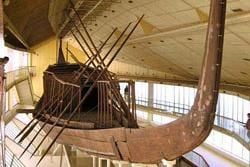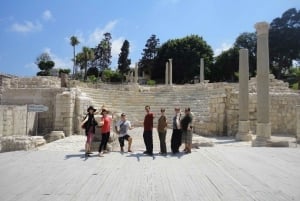Egypt´s Pyramids
Imposing and immovable like monolithic mountains, the great Pyramids of Giza and Sphinx are a cluster of mystical structures which never cease to befuddle, perplex, astound and inspire the world. Built upon the edge of the Giza plateau, where once they stood alone and in peace, they now rub shoulders with Greater Cairo, the ancient alongside the modern, yet remain unparalleled and unique.
The Pyramids and Sphinx were constructed more than 2,500 years BC, which makes a project that would today be an impressive feat of significant import, utterly astonishing. The Great Pyramid of Giza is both the oldest and only remaining Wonder of the World, a structure which will likely outlive a great many of the edifices being built today, adding further distinction to the mythical status of Egypt's most famous icons.
The ancient Egyptians placed great importance upon orientation, believing the east signified rebirth while the west was the empire of the dead, just as the sun is each day born in eastern skies before setting in the west. Accordingly, the Pyramids of Giza, which were built to be the tombs of three pharaohs whose reigns spanned three generations of the pharaonic Fourth Dynasty, beginning with Cheops, the second sovereign of the Fourth Dynasty, and ending with Mycerinus, were orientated precisely upon the four cardinal points.
Each pyramid has an eastern chamber, or serdab, containing the statue of the deceased ruler for whom the pyramid was built, while a western chamber holds that pharaoh's sarcophagus. Furthermore, the entrances of the pyramids were always at the north, facing the North Star, where the ancient Egyptians believed the paradise of good spirits existed.
The Great Pyramid of Cheops
The figures are staggering: 100,000 men working for 20 years, placing almost 2,500,000 limestone blocks weighing 2.5 tonnes each upon one another, to produce the greatest pyramid the world has ever seen (to which its status as one of the original Seven Wonders of the World attests), that which now houses the sarcophagus of its creator, the pharaoh Cheops. With a square base measuring 250m in length, an incline of 51.52 degrees, and a height that was once 146m (now 137m), it is the largest pyramid in Egypt, and the grandfather of the Pyramids of Giza.
The original entrance to the pyramid is, in fact, blocked, and an alternative opening - a hole made by tomb thieves - is now used. Of specific interest are the five solar boat pits associated with Cheops' pyramid, three of which are cut from stone, while the other two, discovered by Kamal El Mallakh in 1954, are made of wood. The pits were created in accordance with the ancient Egyptian pharaohs' belief that boats would be used by one's soul in death to sail to heaven in an everlasting trip within the sun's procession.
The Pyramid of Chephren and the Sphinx
Situated to the south-west of the Pyramid of Cheops, the Pyramid of Chephren is the second of the great pyramids to be built upon the Giza plateau. Chephren's pyramid appears taller than its neighbour because the plateau on which it stands is slightly higher at this point, but it is actually smaller; its square base measures 210m in length, its incline is 53.10 degrees, and its apex reaches a height of 136.5m (originally 143m).
Chephren attempted to build his pyramid with granite blocks, evidence of which can still be seen at the structure's summit, but he died before this goal was realised. Moreover, Chephren constructed a small queen pyramid on the southern side of his main structure, but its stones were stolen in the middle ages, leaving behind no trace. Otherwise, the Pyramid of Chephren shares many features with its predecessor, such as two north-facing entrances.
The magnificent Sphinx, which lies guarding the Pyramids of Giza while keeping a watchful eye upon the city of Cairo, is said to represent the character of its builder, Chephren. The enormous lion with the head of a human is the world's largest monolith statue, though the beard and nose went missing in the 19th century. It sits at a height of 20m and a length of 73m, while the width of its face is 4m.
The Pyramid of Mycerinus
At a height of 62m (originally 66m), an incline of 51 degrees and with a square base measuring 108.5m in length, the Pyramid of Mycerinus is the youngest and most modest of the Pyramids of Giza, though it boasts a full 16 courses of granite blocks. Mycerinus' pyramid is also unique as it has three queen pyramids on its southern side, the heights of which do not exceed 10m. A basalt sarcophagus was found inside the funerary chamber, within which there was a wooden case containing the mummified remains of the pharaoh himself, which are now on display at the British Museum in London.












